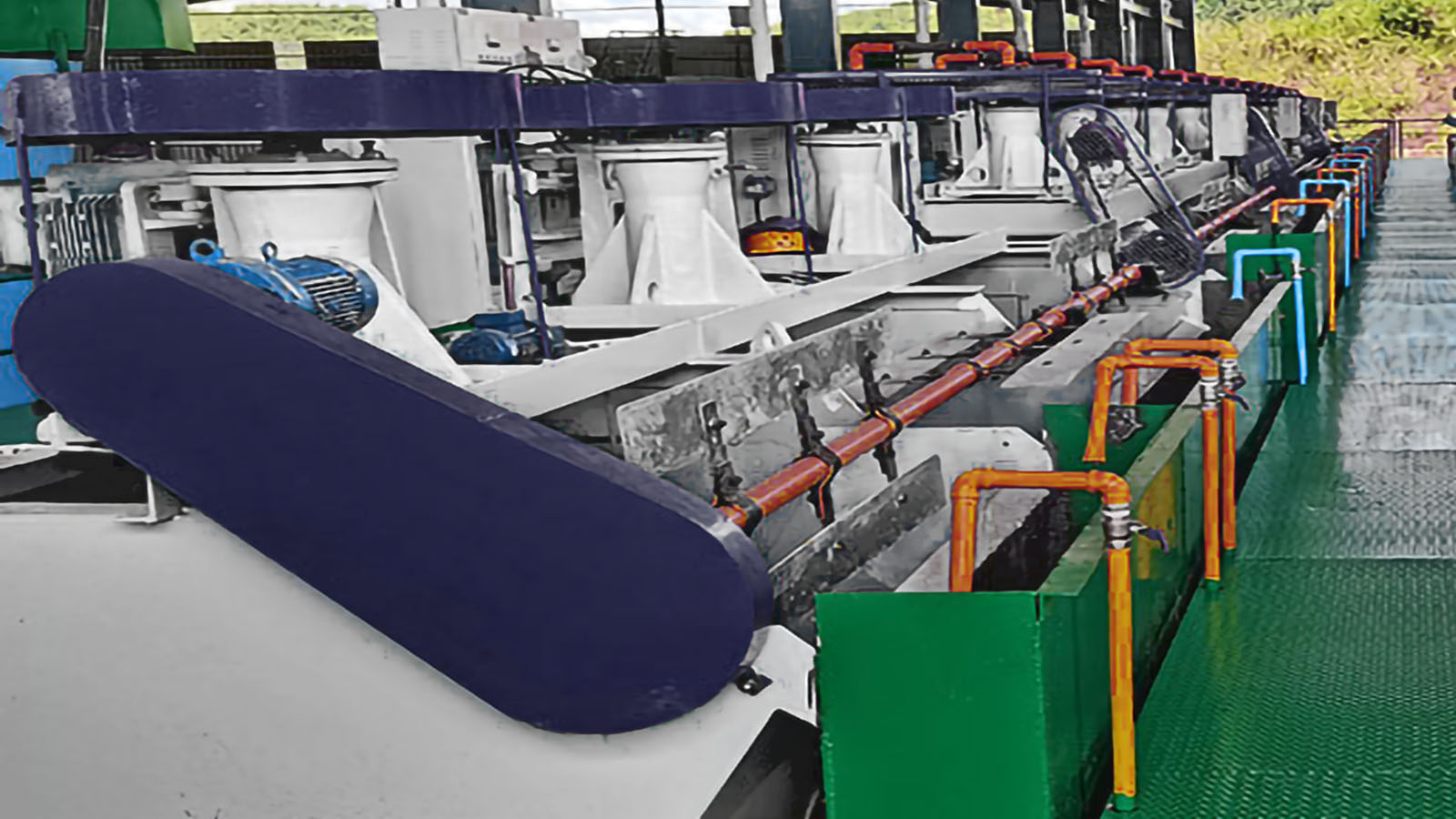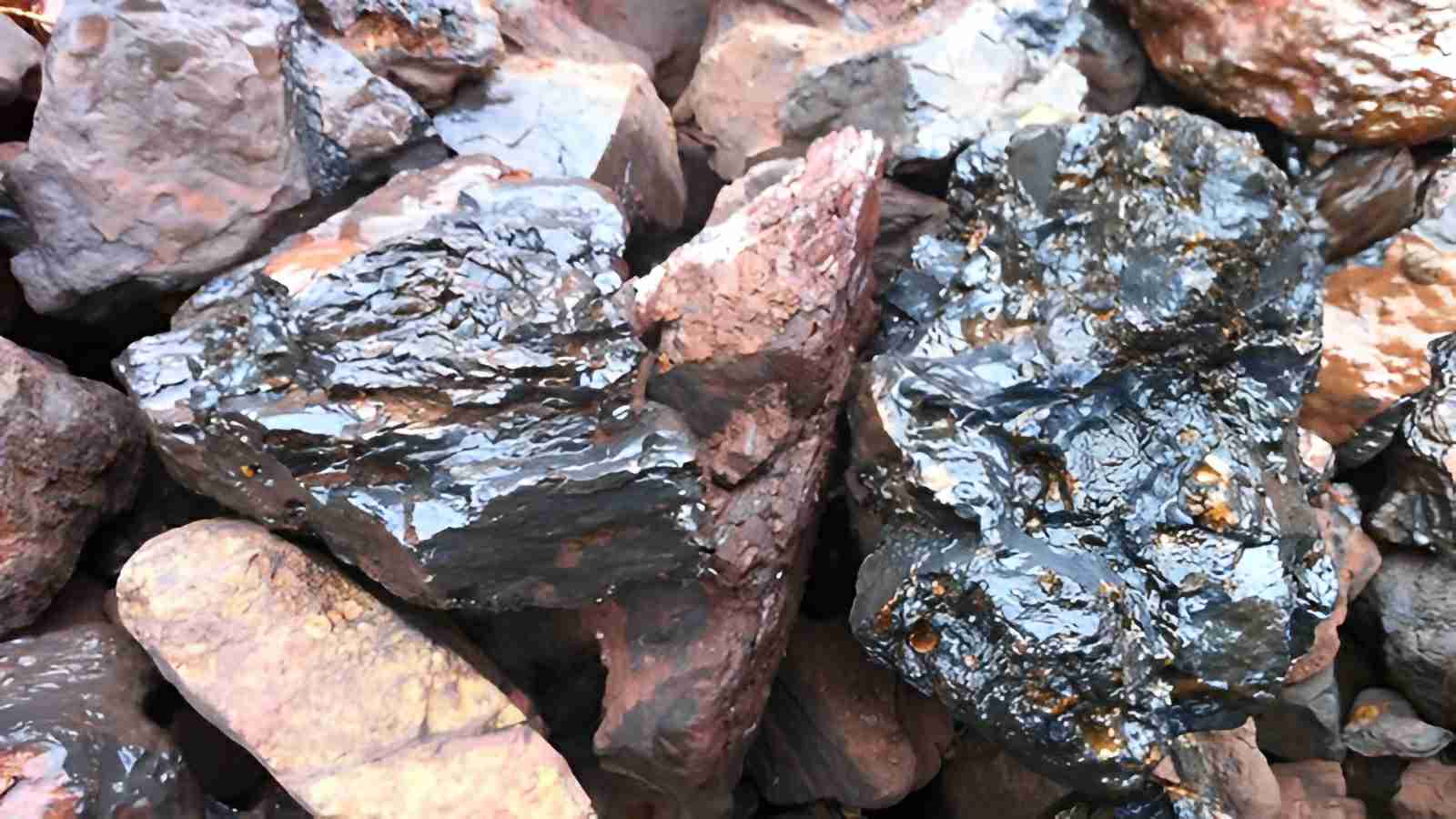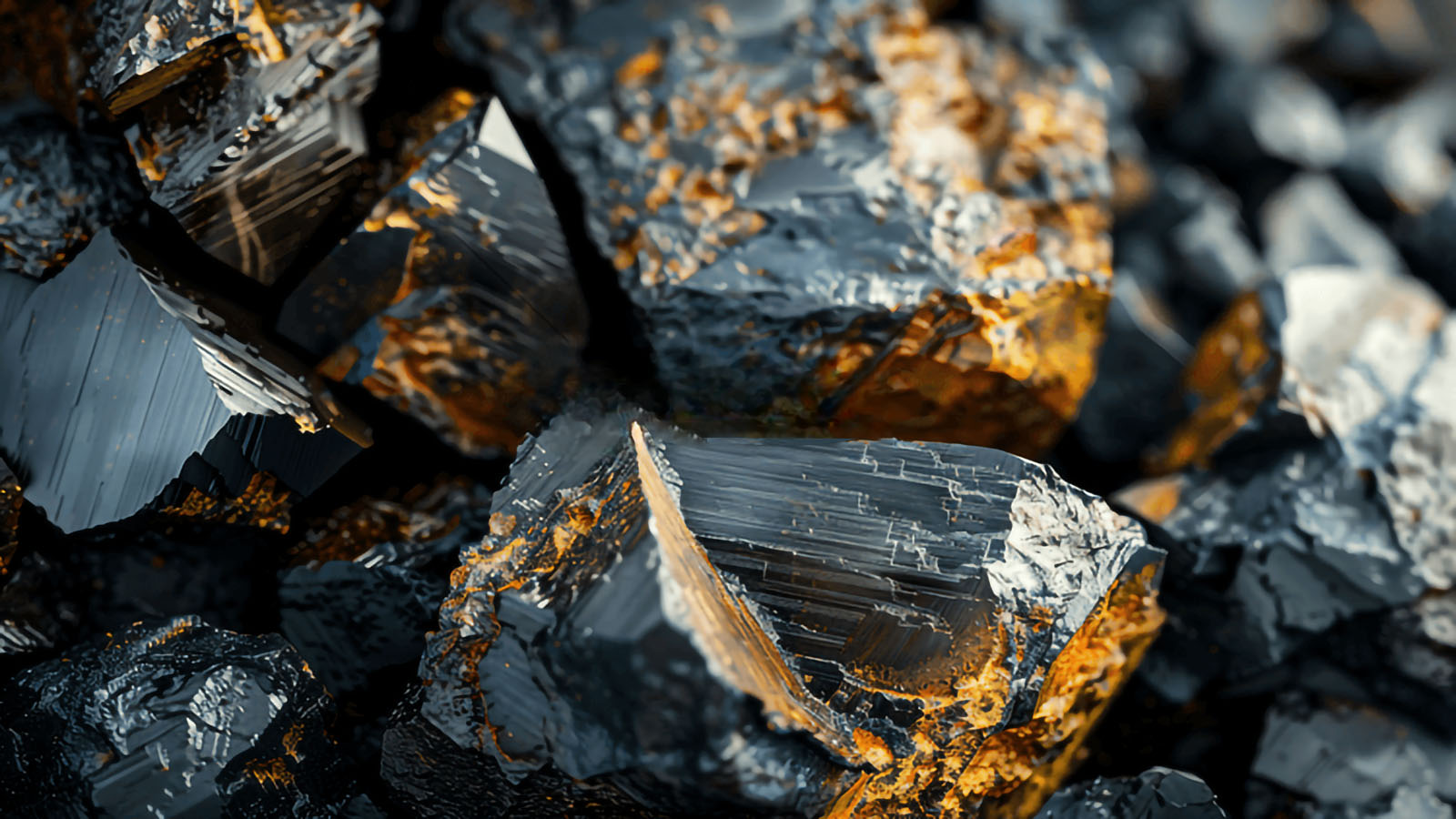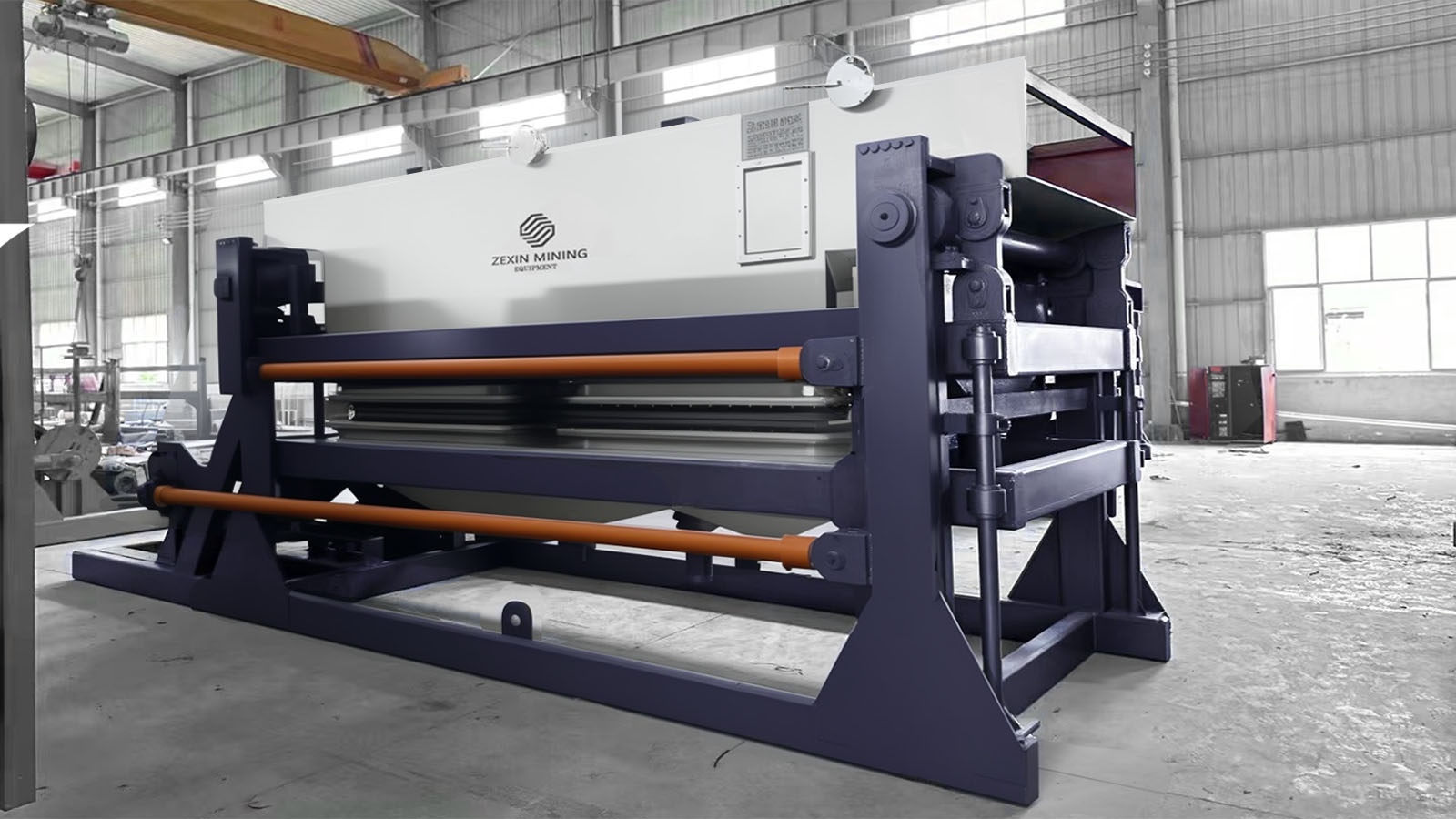
Flotation is one of the most widely used methods for gold ore beneficiation, primarily employed for concentrating fine-grained gold and gold-bearing sulfide ores with good floatability, as well as polymetallic gold-sulfide ores. Let's explore the standard gold flotation processing workflow that ensures optimal recovery.
Gold Flotation Process Overview
The conventional gold flotation process consists of four critical stages: crushing and screening, grinding and classification, flotation separation, and concentration and filtration. Each stage plays a vital role in maximizing gold recovery while maintaining operational efficiency.
Crushing and Screening
1. Process Description
The gold ore crushing process typically employs a two-stage closed-circuit crushing system. Raw ore from mining operations is transported by dump trucks to storage bins and then fed into primary crushers (jaw or gyratory) by feeders (trough or vibrating) for coarse crushing. The crushed product is conveyed to screening equipment, where oversized material returns to the primary crusher while undersized material advances to secondary crushers for fine crushing. This precisely controlled size reduction is essential for subsequent processing steps.
Proper crusher selection and maintenance are crucial for achieving optimal particle size distribution, with target outputs typically ranging from 10-25mm depending on downstream requirements. Zexin Mining's engineering team recommends regular wear monitoring and crusher gap adjustments to maintain consistent product quality.
Grinding and Classification
2. Process Description
The grinding stage utilizes a classification circuit, configured based on the gold ore's liberation size requirements. This article examines a single-stage grinding and classification process: properly crushed ore particles are fed into grid-type ball mills for grinding, with the product pumped to hydrocyclones for classification. The overflow returns to the ball mill for further size reduction, while the underflow advances to the flotation stage.
Ball mill grinding efficiency depends on several factors including ball charge volume (typically 40-45%), grinding media size distribution, and mill speed (70-75% of critical speed). Modern installations often incorporate advanced control systems that monitor power draw and bearing pressure to optimize grinding performance. Achieving the optimal grind size—typically 65-80% passing 74μm for sulfide-associated gold—is essential for liberating gold particles while preventing overgrinding that could lead to slime losses.
Flotation Separation
3. Process Description
Flotation procedures are determined by the specific characteristics of the gold ore. This section focuses on a rougher-cleaner flotation circuit. After grinding and classification, the ore slurry is pumped into conditioning tanks where reagents are added and thoroughly mixed with the pulp. The conditioned slurry then enters flotation cells where agitation and aeration create bubbles that selectively attach to gold-bearing particles, carrying them to the surface as froth. Through rougher and cleaner flotation stages, high-grade gold concentrate is produced, with the remaining material becoming tailings.
Reagent selection is particularly critical in gold flotation. Common collectors include xanthates and dithiophosphates, while frothers like MIBC (methyl isobutyl carbinol) help maintain stable bubble formation. Depressants may be added to improve selectivity by preventing the flotation of unwanted minerals. pH modifiers like lime are used to maintain optimal conditions in the 8-10 range for most gold sulfide flotation. Temperature control and residence time are additional factors that significantly impact recovery rates.
Concentrate Dewatering
4. Process Description
Concentrate dewatering is an essential final step before smelting. The process typically follows a thickening-filtration sequence: gold concentrate slurry feeds into high-efficiency thickeners that reduce moisture content to below 45%, followed by filter presses that further dewater to approximately 15% moisture content. The filtered concentrate is then transported by conveyor to storage facilities awaiting subsequent smelting operations.
Modern dewatering technologies have significantly improved efficiency in this area. High-rate thickeners with enhanced flocculation systems can achieve superior settling rates while reducing footprint requirements. Pressure filters with membrane technology enable lower final moisture contents and reduced filtration cycle times, improving throughput by up to 30% compared to conventional equipment.
Optimizing Gold Flotation Performance
While the above represents a standard gold flotation workflow, optimizing the process requires careful analysis of the specific ore characteristics. Zexin Mining recommends comprehensive metallurgical testing to determine the optimal flotation parameters for each deposit, including grind size, reagent schemes, and equipment specifications. Pilot-scale testing can further validate and refine the process before full-scale implementation.
Advanced process control systems incorporating real-time monitoring of key variables such as particle size, pulp density, reagent dosages, and froth characteristics can significantly enhance both recovery and grade. Recent developments in machine vision and mineral surface analysis technologies are enabling even finer control over the flotation process, with potential recovery improvements of 2-5% in challenging ores.
Conclusion
The gold flotation process represents a sophisticated integration of physical and chemical principles applied to mineral separation. Through careful control of crushing, grinding, flotation, and dewatering operations, modern processing facilities can achieve gold recoveries exceeding 90% in suitable ores. Continuous innovation in equipment design, reagent chemistry, and process control continues to improve both the economic and environmental performance of this essential technology in the gold mining industry.
Related News

Manganese Resource Processing and Metallurgical Applications: From Raw Material to Final Products

Maximizing Tungsten Recovery: Advanced Technologies in Wolframite Processing
